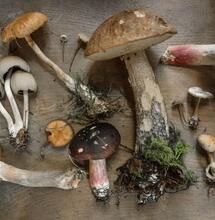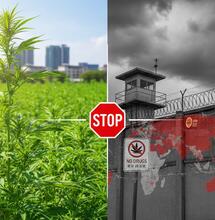What Are the Most Addictive Substances?

A fair amount of research has been dedicated to understanding addiction. One of the most intriguing phenomena is that some people don’t need much to get hooked on something, whether it’s smoking cigarettes, drinking alcohol, taking drugs or even forming habits like gambling. Then there’s this other group of people, those who are pretty much resilient and don’t develop troubled habits even when they try out things.
One of the venues of research where the late brilliant cannabis scientist Rapahel Mechoulam worked on, was compounds that are packed in the brain, and which the brain releases in an attempt to prevent addiction or to prevent the effects of addiction. These releases would not be the same as endocannabinoids but they are thought to work in parallel with the endocannabinoid system as well as other systems in the human body.
The first such identified compound is known to combat nicotine addiction. One of Dr. Mechoulam’s postulation was that the brain is packed with perhaps hundred more compounds of the same group.
While sometimes these compounds can help protect us from developing an addiction, at other times they don’t work. Despite that, there are many reasons why they are worth a further examination. We still don’t know exactly how much of a role has the addictiveness of a certain substance, whether it’s a drug or food, and to what degree the brain steps in and acts as a protector.
How ‘Addictive’ is Cannabis?
Cannabis or marijuana have a relatively low likelihood to cause addiction or substance-use disorder compared to other substances. By substance-use disorder researchers usually think of the degree of substance use that’s jeopardizing a person’s everyday life, causing health or social problems or both.
According to one study, approximately 3 in 10 people who use marijuana develop marijuana use disorder. Another study estimates that there’s a 10% likelihood to “become addicted.” Then there are other factors that determine problematic use or that increase the likelihood for substance abuse. The most obvious one is starting marijuana use at a very young age, or in teenage years.
But There Are Far More Addictive Substances
Some of the most addictive drugs in the world include heroin, cocaine and methamphetamines. For a lot of people, all it takes is trying once to get into the habit of using. Other equally highly addictive substances include alcohol and nicotine.
All addictions hijack the brain’s reward circuits typically by causing a sharp rise in dopamine. It doesn’t have to be a psychedelic to that. Take nicotine for example. Smoking a cigarette releases dopamine in the same brain regions as all other addictive drugs. The result is mood-altering changes that make the user temporarily feel better. Inhaled smoke from tobacco products delivers nicotine to the brain in less than 30 seconds, which makes it very addictive, at the same level with most hard drugs, alcohol or prescription opioids.
Some Foods Are As Addictive as the Most Addictive Drugs
Beyond drugs and alcohol, ultra-processed foods are equally addictive. Examples include cookies, chips, ice cream, sausages, and sugary soft drinks. According to a new study, these foods are as addictive as cocaine and heroin, and around 14% of adults are prone to develop deep cravings for them.
Unlike with drugs, our view on food addictions is not so well established, especially in terms of how overindulgence can affect mental health. Part of the reason why is that while drugs remain illegal, most of these food items can be found in the local supermarket. In addition, although highly addictive, ultra-processed foods are not included in common diagnostic frameworks that evaluate mental health (an example is the Diagnostic and Statistical Manual of Mental Disorders).
We know some of the dangers of junk food though. Excessive indulgence in sugary and greasy foods can lead to obesity and this can have a secondary effect where mental health is also implicated. For example, a person can experience low self-esteem because of gaining weight as well as it can affect their overall mental well-being because they don’t like how they look.
Again, like other addictions, eating too much junk food triggers a spike in dopamine that is followed by a sharp decline in the neurotransmitters. The result is a cycle of craving, satisfaction and crash the same as people experience with drugs or alcohol.
How Can You Combat Addictions?
There’s no uniformed view on what an ‘addiction’ is. Different addictions take on the same processes in the brain but the physical or psychological presentations can vary. Also, some addictions are only partial. Seen this way, most of us do have some kind or level of addiction for something.
That said, “real” addiction is doing something to the degree where it becomes a serious problem and the person is not able to stop the harmful habit and/or behavior. People continue to do that harmful thing because it offers them some kind of relief from everyday stress situations.
The first (and usually the most difficult) step is breaking the cycle of habit. This can be especially difficult if a person has developed a physical dependence on the substance. The second important step is to learn mechanisms on how to prevent a relapse or going back to the same old. This is where support and rehab programs can often help greatly. If someone you love struggles with addiction, don't hesitate to reach out to health professionals and support services and get help.
Also read on Soft Secrets:
- Occasional Smoker or Addict? Where is the Line?



.jpg)





